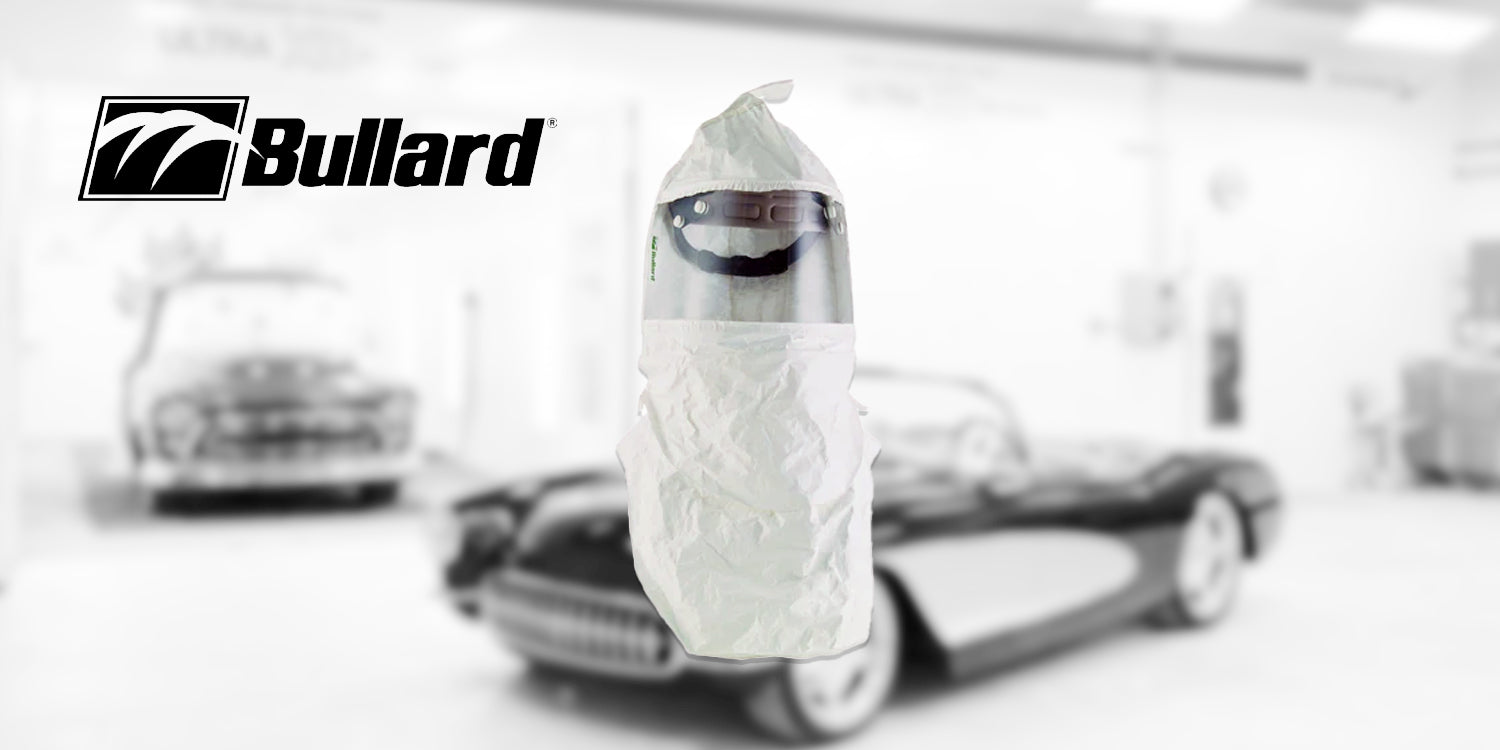In the automotive refinish industry, safety and efficiency go hand-in-hand. With the presence of hazardous chemicals like isocyanates in paints and airborne particles from grinding or blasting, personal protective equipment (PPE) is not just a requirement—it’s a lifeline. Among the top choices for respiratory protection, Bullard respirators stand out as a trusted solution for auto refinishing professionals. Let’s explore why 85% of leading shops rely on Bullard’s innovative respiratory systems to protect their teams and boost productivity.
1. Unmatched Protection Against Isocyanates and Airborne Hazards
Isocyanates, commonly found in automotive paints, are among the most dangerous chemicals technicians face daily. Traditional filters or cartridges often fall short in providing adequate protection against these harmful substances. Bullard’s Supplied Air Respirators (SARs) and Powered Air-Purifying Respirators (PAPRs) are specifically designed to shield workers from these invisible threats.
- Supplied Air Respirators (SARs): These systems deliver clean, breathable air directly to the user, bypassing contaminated shop environments.
- Powered Air-Purifying Respirators (PAPRs): With advanced filtration technology, PAPRs provide constant airflow while removing harmful particles and vapours.
By using Bullard’s respiratory systems, technicians can work confidently around hazardous fumes and particulates without compromising their health.
2. Lightweight Comfort for Long Workdays
A common complaint about PPE is discomfort during extended use. Bullard addresses this issue with ergonomically designed respirators that prioritize user comfort without sacrificing protection.
- The 88VX Blast Helmet features a lightweight inner shell with an adjustable headband suspension to ensure a snug yet comfortable fit.
- Loose-fitting hoods like the CC20 Series offer a wide field of vision and are equipped with disposable visor covers for easy maintenance.
- Climate control options such as the AC1000 Cool Tube help regulate temperature, keeping workers cool during summer or in high-heat environments.
These features not only improve comfort but also enhance worker productivity by reducing fatigue during long shifts.
3. Durability That Saves Time and Money
Bullard respirators are built to withstand the demanding conditions of automotive refinishing shops. From abrasive blasting to paint spraying, these systems are designed for durability and dependability.
- The GenVX Blast Helmet, made from high-density polyethylene (HDPE), offers superior strength while remaining lightweight.
- Replaceable components such as capes, lenses, and filters make it easy to maintain and extend the lifespan of the equipment.
- Robust warranties and low replacement part costs ensure long-term value for shop owners.
By investing in durable PPE like Bullard respirators, shops can reduce downtime caused by equipment failure and save on replacement costs over time.
4. Compliance with Industry Standards
Meeting safety regulations is critical for any automotive refinish shop. Bullard respirators are engineered to comply with stringent industry standards, providing peace of mind for both employers and employees.
- All Bullard respiratory products meet or exceed National Institute for Occupational Safety and Health (NIOSH) standards.
- The Spectrum Series Full-Face Respirator offers ANSI/ISEA Z87+ impact face protection, ensuring compliance with workplace safety requirements.
- Advanced air filtration systems help shops adhere to OSHA Grade D breathing air standards.
With Bullard PPE, you can be confident that your shop is meeting all necessary safety regulations while protecting your team.
5. Enhanced Productivity Through Streamlined Design
Bullard’s respiratory systems are not just about safety—they’re also designed to improve workflow efficiency in busy automotive refinish shops.
- The EVA Powered Air-Purifying Respirator features a compact, ergonomic design that allows technicians to move freely without being tethered to bulky equipment.
- Supplied air systems like the Clean Air Box (CAB) provide high-performance filtration for multiple users simultaneously, ensuring uninterrupted workflow across workstations.
- Quick-change components make it easy to switch between tasks like blasting, grinding, or painting without significant downtime.
These innovations enable technicians to focus on their work while staying protected, ultimately increasing shop throughput.
Conclusion
Bullard respirators have earned their reputation as the gold standard in respiratory protection for automotive refinishing professionals. By offering unparalleled protection against hazardous chemicals, lightweight comfort, durable construction, regulatory compliance, and productivity-enhancing features, Bullard PPE ensures that your team stays safe while delivering top-quality results.
At HMFT, we’re proud to support auto refinishing shops with industry-leading solutions like Bullard respirators. If you’re ready to upgrade your shop’s safety protocols and improve efficiency with cutting-edge PPE, reach out to us today!
FAQ
Q: What makes Bullard respirators ideal for automotive refinishing?
A: Bullard respirators provide superior protection against hazardous chemicals like isocyanates and airborne particles while offering lightweight comfort and durability tailored for demanding shop environments.
Q: Are these respirators compatible with other PPE?
A: Yes! Bullard’s loose-fitting hoods and helmets are designed to accommodate prescription eyewear, safety glasses, or welding helmets without compromising fit or protection.
Q: How do I maintain my Bullard respirator?
A: Regularly replace disposable components like visor covers and filters. Clean reusable parts as per manufacturer guidelines to ensure optimal performance and longevity.
Q: Can Bullard systems handle multiple users?
A: Yes! Systems like the Clean Air Box (CAB) support multiple users simultaneously by providing filtered air through a centralized supply system.
Q: Are climate control options available?
A: Absolutely! Accessories like the AC1000 Cool Tube help regulate temperature during high-heat tasks, ensuring worker comfort throughout long shifts.

